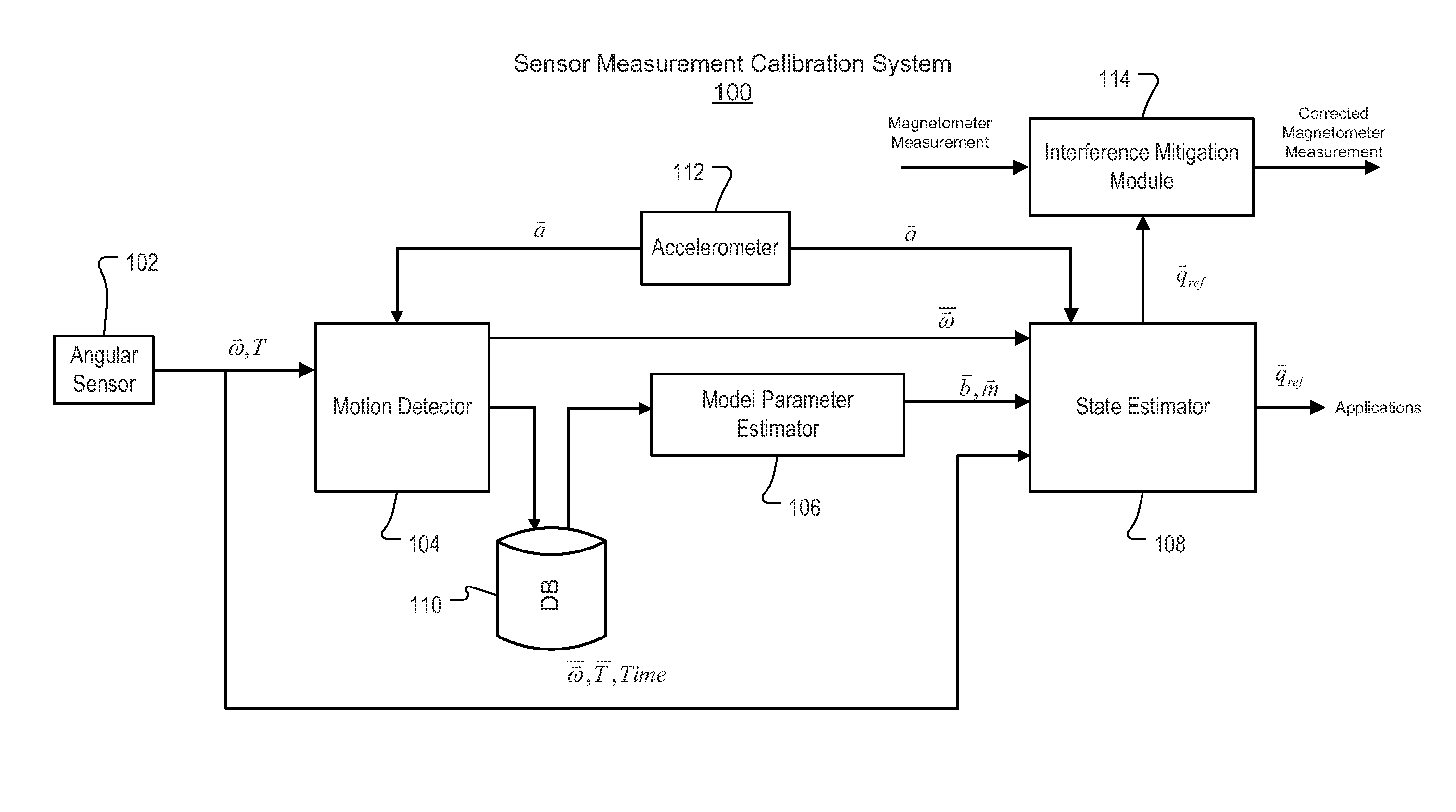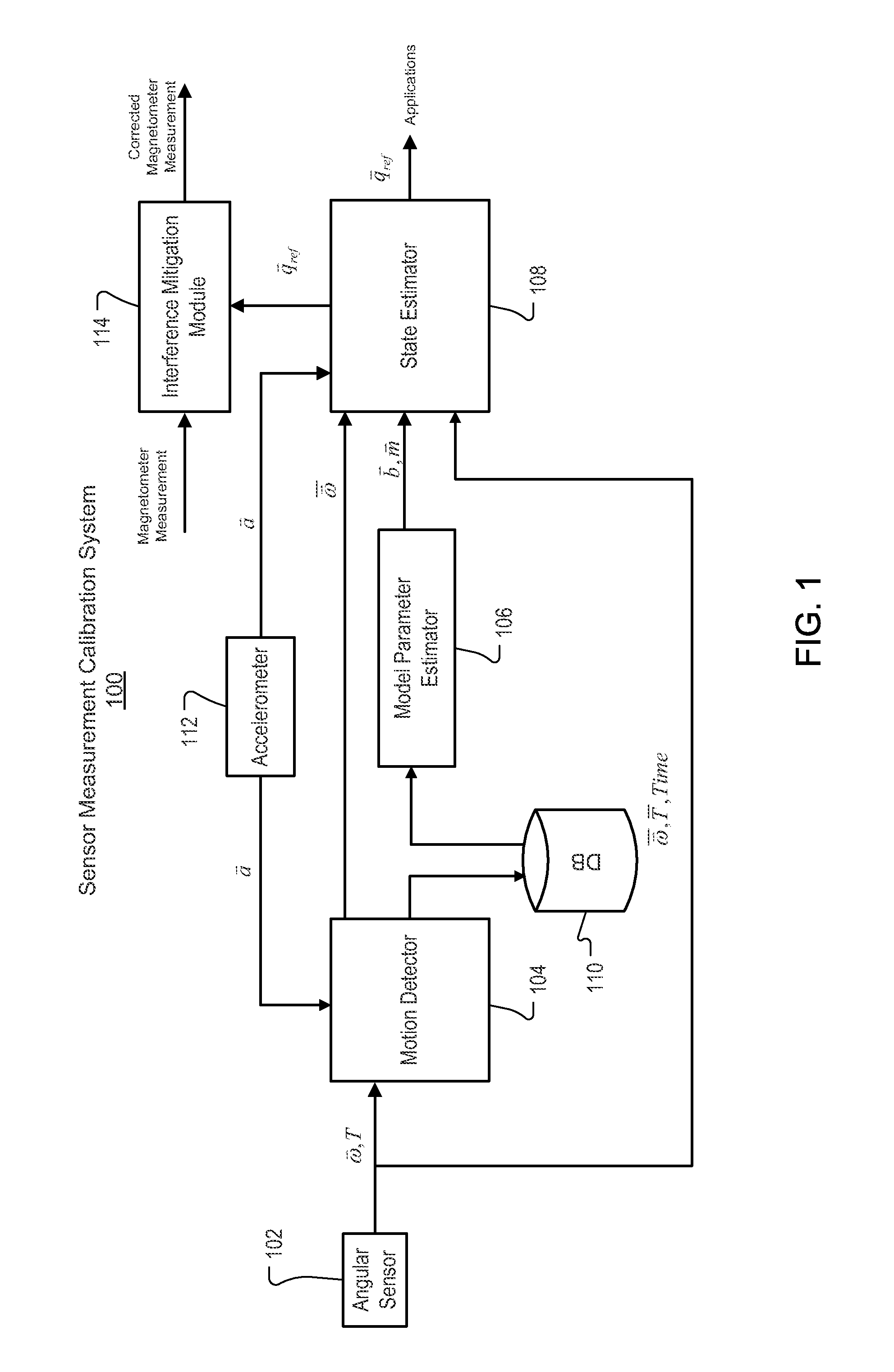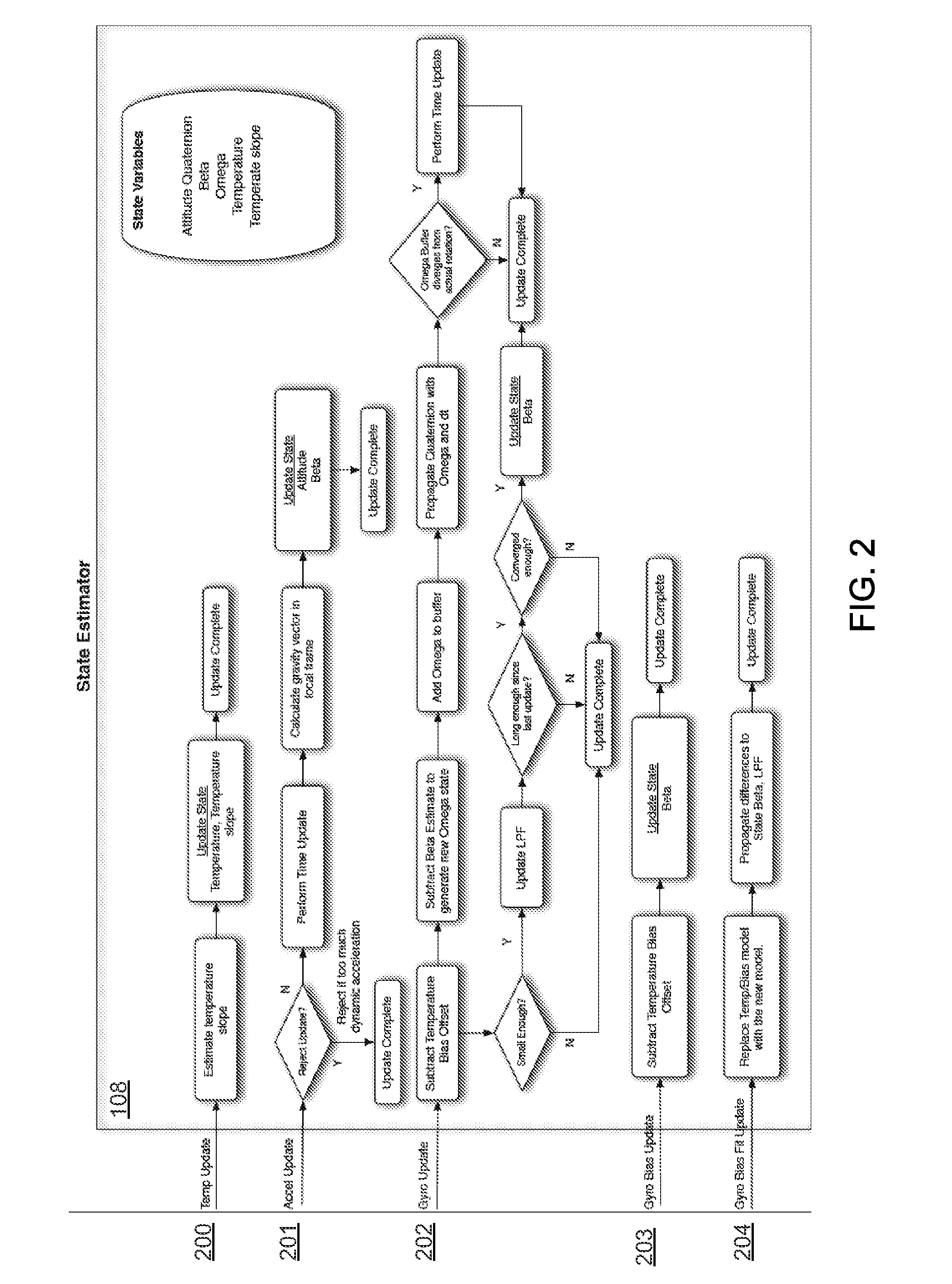Calibrating sensor measurements on mobile devices
a sensor and mobile device technology, applied in the direction of heat measurement, turn-sensitive devices, instruments, etc., can solve the problems of high frequency noise, high frequency noise, cross-axis sensitivity is strongly affected, and the gyro of the device is susceptible to bias, so as to achieve the effect of reducing interference in other sensor measurements
- Summary
- Abstract
- Description
- Claims
- Application Information
AI Technical Summary
Benefits of technology
Problems solved by technology
Method used
Image
Examples
Embodiment Construction
Exemplary Sensor Measurement Calibration System
[0012]FIG. 1 is a block diagram of an exemplary sensor measurement calibration system 100. In some implementations, system 100 can include an angular rate sensor 102 (e.g., a MEMS gyro), motion detector 104, model parameter estimator 106, state estimator 108, calibration database 110, accelerometer 112 and an optional interference mitigation module 114. System 100 can be incorporated in a variety of mobile devices, including but not limited to: a handheld computer, a personal digital assistant (PDA), a cellular telephone, an electronic tablet, a network appliance, a digital camera, a video camera, a smart phone, an enhanced general packet radio service (EGPRS) mobile phone, a media player, a navigation device, an email device, a game console, or a combination of any two or more of these devices. In some implementations, some or all of the components of system 100 can be included on one or more integrated circuit (IC) chips.
[0013]In some...
PUM
 Login to View More
Login to View More Abstract
Description
Claims
Application Information
 Login to View More
Login to View More - R&D
- Intellectual Property
- Life Sciences
- Materials
- Tech Scout
- Unparalleled Data Quality
- Higher Quality Content
- 60% Fewer Hallucinations
Browse by: Latest US Patents, China's latest patents, Technical Efficacy Thesaurus, Application Domain, Technology Topic, Popular Technical Reports.
© 2025 PatSnap. All rights reserved.Legal|Privacy policy|Modern Slavery Act Transparency Statement|Sitemap|About US| Contact US: help@patsnap.com



